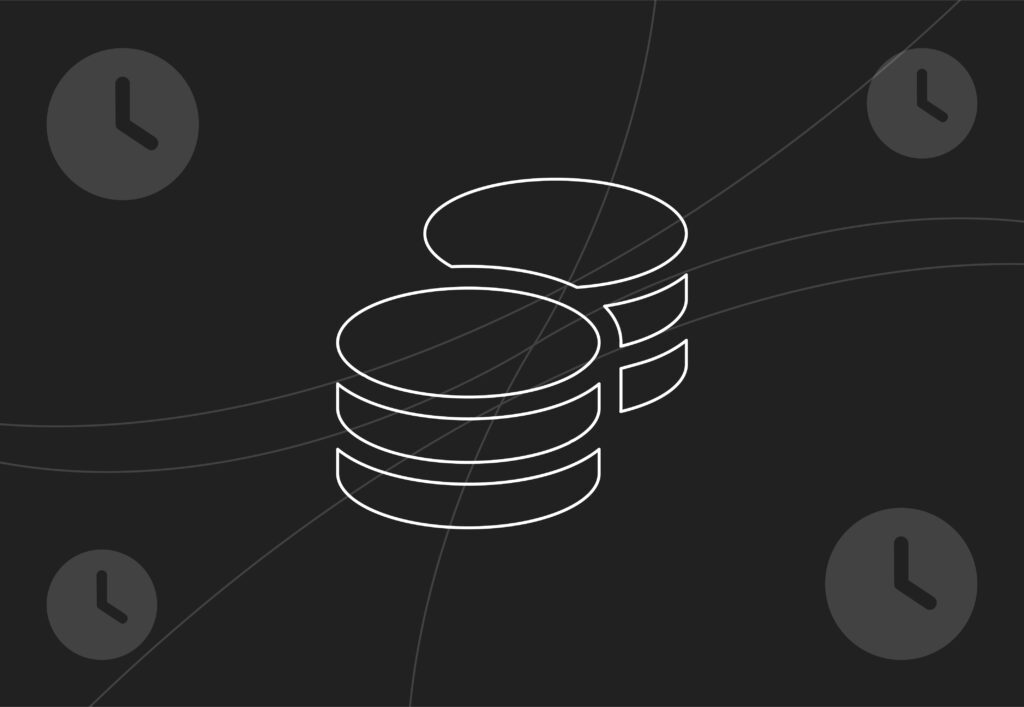
ROI vs ROAS in PPC marketing

If you work in PPC, you’ve probably found that it’s hard to have any sort of conversation revolving around data and analysis where ROAS and/or ROI don’t get used or mentioned in some capacity.
While establishing the difference between Return on Investment (ROI) and Return on Ad Spend (ROAS) may seem trivial, for a lot of businesses, the subtleties between the two can help transition your marketing strategies away from the humdrum of low profits, as well as avoiding the dreaded lack of cohesion between your marketing channels that is unfortunately all too common.
This is why Embryo is so good at what we do.
While the ROAS metric has often been the standard-bearer for e-commerce performance when assessing PPC, we understand its limitations and why viewing the data in a more holistic way, which often means looking at ROI, can be your ticket to overall business profitability.
Regardless of the metrics you currently use to assess the performance of your marketing setup, our expert PPC consultants have put together this blog to help raise your awareness of each metric and help give you actionable insights into how you can apply these metrics to help boost your performance.
Understanding ROI vs ROAS in PPC Marketing
The two metrics are often conflated because they both reference a return on the money that you’re putting into your marketing efforts.
However, the two can be distinguished by the scope by which they use to reach their end figure.
While ROAS solely looks at the return you get from your ad spend, ROI takes a much broader view by not just looking at the revenue generated versus the ad spend, but also the costs associated with the product or service being advertised and sold.
This means that ROAS will be the metric you use to ascertain whether you’re getting more out of your advertising efforts than you’re putting in, whereas ROI will help you understand whether your entire investment is profitable for your business.
So, let’s get to the nitty gritty and take a deeper dive into the metrics themselves…
What is ROAS?

ROAS is generally used to measure the efficacy of your online advertising campaigns with calculations that show how much revenue is generated for every pound you spend.
- The formula for calculating your ROAS is as follows:
- (Revenue attributable to your ads ÷ Costs of your ads) x 100
So, if you spend £100 on advertising and receive £500 back via advertising revenue, then your ROAS will be 500%.
ROAS is particularly important in PPC because advertising platforms typically record ROAS in a sophisticated and comprehensive manner.
This means that you can use ROAS as a metric to help guide your optimisation efforts and improve your in-account performance. In addition to this, there are bidding strategies that can use your desired target ROAS to influence bidding and work towards achieving this goal.
Because of this, ROAS is a dependable metric that can help formulate the entire structure and strategy of your marketing campaigns.
The benefits of measuring ROAS vs ROI for PPC campaigns
There are a multitude of benefits when it comes to measuring ROAS vs ROI. Some of these include:
- Simple and easy calculation: ROAS, quite simply, is an easy metric to record. This means that daily and weekly reporting can be a lot quicker, and keeping track of your performance becomes a lot easier to manage.
- True view on advertising efficiency: Due to ROAS isolating the performance of your marketing efforts, you can successfully identify ad campaigns that are performing well while also adjusting underperforming ones more promptly.
- Automated optimisation: As previously mentioned, platforms such as Google Ads and Microsoft Ads have integrated ROAS into their platforms and also directly into their bidding strategies. This allows you to set a Target ROAS, which will automatically adjust how your campaigns enter each auction in real time to best achieve your desired ROAS.
- Actionable insights: In addition to the above, ROAS will give you actionable insights at a more granular level across keywords, ads, shopping products, assets, and more. This means that you can identify where and what you need to optimise to improve performance, whether that be your ad copy, keyword targeting, or anything else.
In summary, ROAS comes into its own when you want to evaluate the effectiveness of your advertising and marketing campaigns, gain greater insight into how well your ad spend is translating into revenue, or help focus on how best to optimise your online marketing strategies and budget allocations.
How our paid media experts scaled ROAS and revenue
One of our paid media clients is an online retailer, who wanted to run paid social and PPC campaigns to grow online conversions, ROAS and revenue.
Our strategy involved aligning the two paid media channels, implementing best practices and flexing the budget between off and peak season. By having paid social and PPC working in tandem we ensured we targeted all stages of the funnel and in 12 months we scaled ROAS by 17%. This increase in ROAS came from driving an increase of 4.5% in purchases and led to a 47.9% increase in revenue.
Using tROAS
Extending on ROAS is tROAS which stands for target return on ad spend. This is a bidding strategy that enables advertisers to maximise the value of their conversions by setting the desired return on ad spend.
Setting a higher tROAS can help businesses slow down spending, decrease CPC and force profitability. Whereas setting a lower tROAS can increase a number of factors including, CPC, revenue and spending, which means overall you’re at risk of wasting money.
What is ROI?

ROI, to put it simply, is a measured metric that helps assess the effectiveness and returns from your marketing spend. In layman’s terms, it will tell you whether or not the money you’re putting into your marketing is profitable or not.
The formula to measure ROI is pretty simple:
- (Net Profit ÷ Cost of Investment) x 100
Following the same example in the ROAS section, ROI will measure the £500 you have earned from your £100 marketing spend, while also adding in shipping costs, production costs, as well as any other overheads.
If those overheads come to £300, this means that you’re going to be left with an overall profit of £200.
So while your ROAS comes to 500%, after the costs associated with delivering those products are taken into account, the ROI is 200%.
Here we can see the issue with conflating the two metrics, as the insights they provide on overall performance are different.
The benefits of measuring ROI for PPC campaigns
As we’ve now established, ROI takes a more detailed view of your overall profitability and is not constrained by the limitations of marketing platforms.
Keeping that in mind, ROI becomes essential to understanding what your target PPC ROAS should actually be, as well as giving you an idea of your ideal target revenue.
Your ROI will help you make more informed decisions at a business level, which the marketing channels you’re operating from can work around and supplement.
- Other benefits of measuring ROI for PPC campaigns include:
- Informed Strategy Decisions: While ROI isn’t tracked directly through marketing platforms in the traditional sense, understanding the true profitability of your marketing efforts via ROI will help you allocate your budgets more effectively
- Long-Term Growth: By focusing on ROI, you have a greater chance of ensuring that your online advertising will contribute to the overall financial health of your business, meaning you can focus on long-term growth strategies
- Improved Data Alignment: ROI allows you to translate the value of marketing into a universal financial language. This will allow for clear communication between marketing teams so you can all work together towards the same goal.
To round up, ROI provides you with a bird’s eye view of how your marketing efforts translate into real-world profitability.
While you can maybe afford to have a negative ROAS assuming your ROI paints a more positive picture, you may just want to avoid ever being in the opposite scenario.
How our paid media experts generate ROI
Whilst ROAS can be an important metric to measure the success of your paid campaigns, understanding how paid channels contribute to your overall marketing ROI can help you allocate budget and make decisions to enable sustainable growth.
For one of Embryo’s home retail clients, they wanted to focus more on ROI than ROAS, by looking at the CPA (cost per acquisition). This was because they knew their customers had a high LTV (lifetime value) and therefore by measuring their campaigns against these metrics we could drive ROI by acquiring customers efficiently and cost-effectively.
Our team were tasked with driving the CPA as low as possible and our PPC campaigns did just that, reducing the CPA by 15% whilst also increasing the AOV (average order value) by 20%. By achieving targets like this and by not just focusing on ROAS, we could show how our performance was generating a greater ROI for our client.
ROI vs ROAS: The key differences explained
While both ROAS and ROI offer valuable insights, they take a different perspective on financial performance and approach things from different angles, which in turn provides you with different outcomes.
ROAS takes a more ground-level view of the efficiency of your advertising efforts in real-time. It’s a metric you can check daily or weekly, making it ideal for keeping your finger on the pulse about your current performance and then optimising your campaigns off the back of it.
However, ROAS does have its shortcomings. It only takes into account advertising costs within your advertising platform of choice, while ignoring other rather important expenses that contribute to profitability.
On the other side of the fence, ROI takes a more bird’s-eye view approach to the overall health of your marketing efforts. This more holistic perspective considers not only your ad spend, but also costs associated with the product, staff salaries, and other overheads.
This means that ROI calculations might only happen every month or even quarter given the varying nature of overheads, but the insights it offers are essential for long-term strategic planning.
A low ROI can often highlight flaws beyond your advertising spend, which can mean you’ll need to take a step back and re-evaluate aspects of your business not previously being prioritised.

George Noon
PPC Lead
By understanding these key differences, you can leverage both ROAS and ROI to optimise your marketing efforts for maximum impact and profitability.
FAQs
Which Other Metrics Should You Measure in PPC?
There are a few metrics you should consider measuring in PPC.
One of those is MER, which is your Marketing Efficiency Ratio. MER is becoming increasingly important in the age of increased privacy laws, as well as providing you with essential data for multi-channel marketing campaigns.
Another metric that you should measure is Conversion Value (By Conversion Time). Conversion Value (By Conversion Time) shows you your revenue based on when the purchase actually happened, offering a more accurate picture of your ad campaign’s impact in real-time.
This is in contrast to the traditional Conversion Value metric, which shows you the revenue based on when the click was made.
CVR measures your conversion rate and is extremely important for understanding the wider marketing picture. It calculates the percentage of users who have visited your website and then converted. By knowing this metric you can asses your landing page quality, as a higher CVR can demonstrate a successful landing page, whereas a low CVR can be due to issues with user experience.
Understanding your CTR, helps you realise how often users are not only viewing your ads but engaging with it too. This information can help improve the effectiveness of your ads. If your CTR is unusually low, then we recommend assessing your ad quality score alongside refreshing your ad copy and assets.
Search impression share will show you the percentage of times your ad received impressions on the search network, compared to how many times the ad could have appeared on the SERP. This is beneficial for gaining extra insight into your ad quality and how much Google wants to showcase your ad.
My ROAS is low- Why, and how can I improve it?
ROAS being low isn’t necessarily a bad thing, it’s all dependent on the business and marketing goals, and specifically profit margin. Generally, businesses want ROAS to be as high as possible so they get a greater return on their spending. A low ROAS means you’re not getting the return on your advertising spend.
Where low ROAS can be assigned to having a low tROAS, audience targeting, and effective ad copy, it could also be a reflection of a multitude of broader business considerations. For example, a low average order value on site, uncompetitive product prices, or seasonal products. Often or not it is not just one clear issue which causes a low ROAS, therefore, a wider analysis of the business offering is required.
Some ideas to improve onsite CVR beyond manually increasing tROAS, are using plug-ins to increase the AOV and limiting bidding on products which aren’t priced competitively. Optimising landing pages and aligning your PPC strategy with other marketing channels can also improve ROAS.
What PPC tools and software can provide the most accurate data?
There are a variety of PPC tools available which will help increase your data accuracy. Having accurate data is extremely important when optimising campaigns and improving ROI. If you don’t have precise data it can be difficult to make confident data-driven decisions. There are plenty of third-party tools that help you to collect, measure and act on data with confidence. We have broken down some of the key tools that provide accurate PPC data.
Opteo
- Opteo is an AI-driven Google ads optimisation tool that offers a range of recommendations to help improve Google ad performance.
- It works by continuously monitoring Google Ads accounts over a significant period of time and suggests improvements as and when they come up. These improvements can be added to your Google Ads in just a few clicks!
- Opteo can help manage keywords and Shopping ads, improve ad creative, optimise bids, exclude bad traffic and detect errors.
- The platform can also be integrated with Slack for efficient updates across teams and strong communication.
Semrush
- Semrush is an all-in-one marketing tool, so it does have a specific PPC advertising toolkit that you can use to plan and improve your Google Ads performance.
- Semrush’s Ads Launch Assistant helps you launch and optimise ads, and use Semrush data to create effective ad copy.
- Semrush also helps with market research as it provides main paid search competitors, what keywords they are bidding on and examples of their live ads. As well as this, Semrush allows you to discover Google shopping competitors, competitor pricing structures and much more.
- The Keyword gap, Keyword magic tool, and PPC keyword tool allow you to conduct accurate and effective keyword research.
- Finally, Semrush helps PPC marketers with position tracking, so you can track your visibility against competitors, discover new competitors and curate reports easily.
TripleWhale
- TripleWhale is a Shopify Plus partner. This analytics platform integrates Google Ads, Facebook Ads and TikTok Ads.
- This platform provides first-party attribution tracking, profitability tracking (with real-time ROAS) as well as customer journey insights across the different platforms. This platform is ideal for e-commerce businesses.




